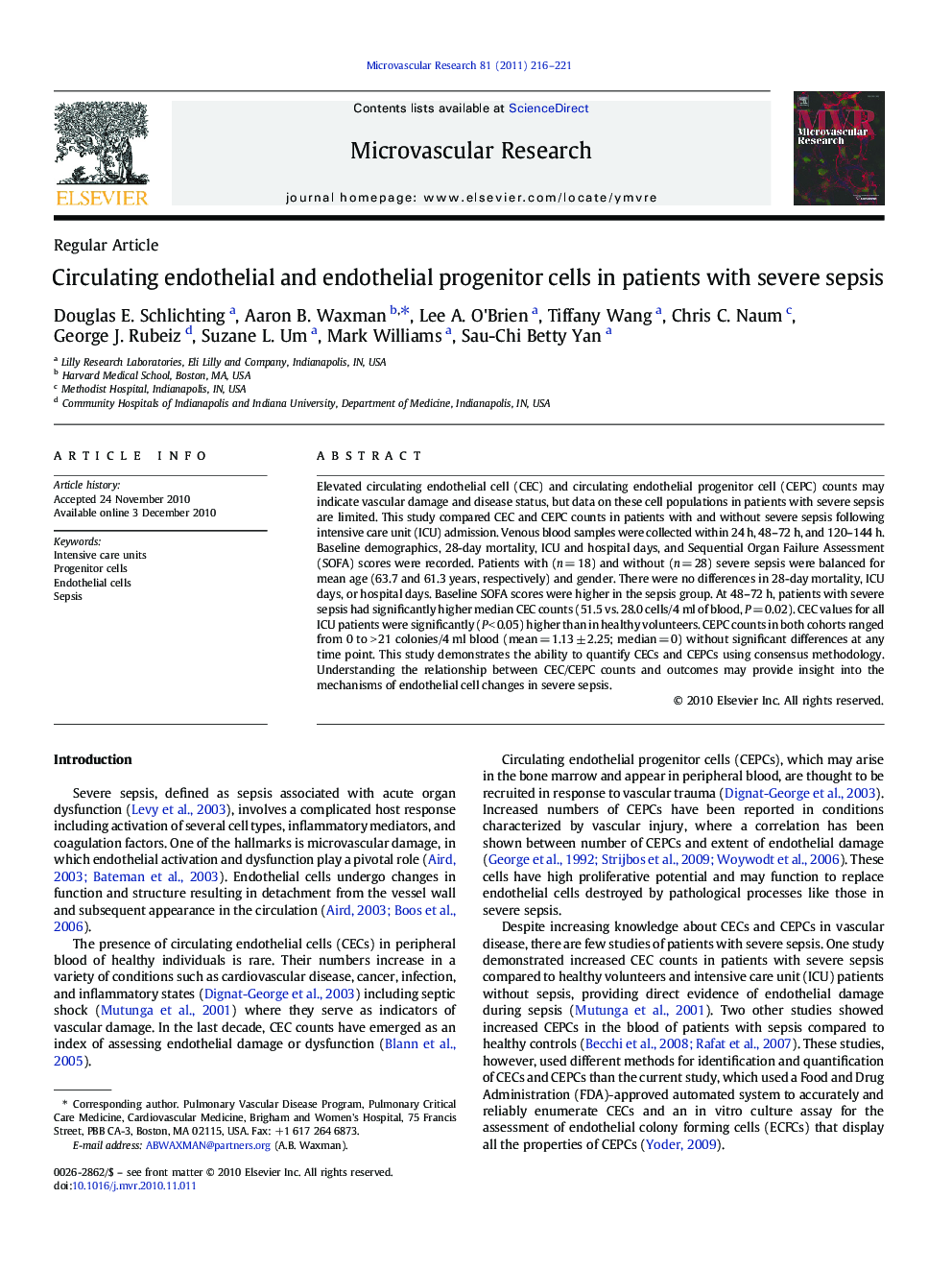| کد مقاله | کد نشریه | سال انتشار | مقاله انگلیسی | نسخه تمام متن |
|---|---|---|---|---|
| 1994991 | 1064946 | 2011 | 6 صفحه PDF | دانلود رایگان |

Elevated circulating endothelial cell (CEC) and circulating endothelial progenitor cell (CEPC) counts may indicate vascular damage and disease status, but data on these cell populations in patients with severe sepsis are limited. This study compared CEC and CEPC counts in patients with and without severe sepsis following intensive care unit (ICU) admission. Venous blood samples were collected within 24 h, 48–72 h, and 120–144 h. Baseline demographics, 28-day mortality, ICU and hospital days, and Sequential Organ Failure Assessment (SOFA) scores were recorded. Patients with (n = 18) and without (n = 28) severe sepsis were balanced for mean age (63.7 and 61.3 years, respectively) and gender. There were no differences in 28-day mortality, ICU days, or hospital days. Baseline SOFA scores were higher in the sepsis group. At 48–72 h, patients with severe sepsis had significantly higher median CEC counts (51.5 vs. 28.0 cells/4 ml of blood, P = 0.02). CEC values for all ICU patients were significantly (P < 0.05) higher than in healthy volunteers. CEPC counts in both cohorts ranged from 0 to > 21 colonies/4 ml blood (mean = 1.13 ± 2.25; median = 0) without significant differences at any time point. This study demonstrates the ability to quantify CECs and CEPCs using consensus methodology. Understanding the relationship between CEC/CEPC counts and outcomes may provide insight into the mechanisms of endothelial cell changes in severe sepsis.
Comparison of circulating endothelial cell counts between patients in the intensive care unit with severe sepsis compared to patients without sepsis was similar except at 48–72 h post-baseline when the severe sepsis cohort showed significantly higher counts providing insight into the mechanism of microvascular changes in severe sepsis.Figure optionsDownload as PowerPoint slideResearch Highlights
► Patients in intensive care, with and without severe sepsis, had significant elevations in circulating endothelial cell counts compared to healthy volunteers.
► Consensus methodology using immunomagnetic separation demonstrated the ability to quantify circulating endothelial and circulating endothelial progenitor cells.
► Positive correlation between improvement in organ function as measured by Sequential Organ Failure Assessment (SOFA) scores and baseline circulating endothelial progenitor cells.
Journal: Microvascular Research - Volume 81, Issue 2, March 2011, Pages 216–221